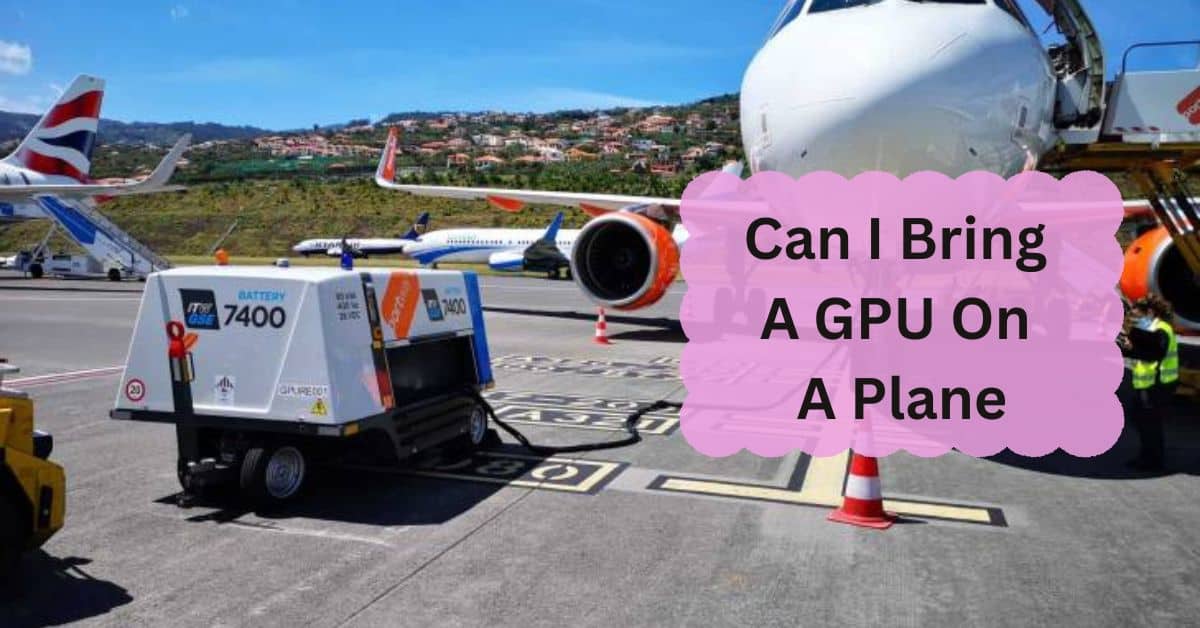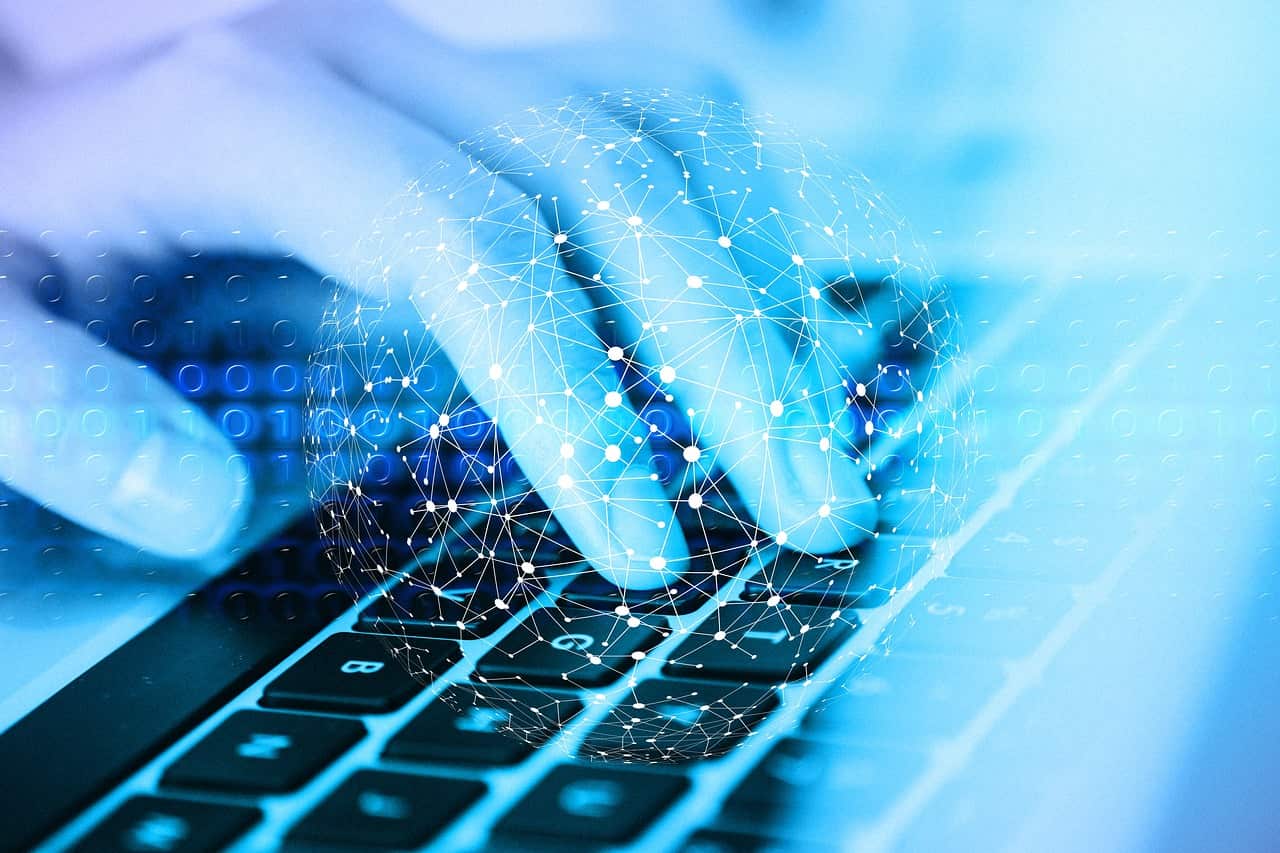Bringing electronics like a GPU (graphics processing unit) on a plane can be confusing due to security and safety regulations. Traveling with valuable electronics like a GPU can be challenging, especially if you’re uncertain about airport regulations. Let’s clear up whether you can bring your GPU on a plane, how to pack it safely, and what you should expect during your trip.
Yes, you can bring a GPU on a plane. Pack it securely in your carry-on bag to avoid damage. Make sure it’s safe from impacts, as GPUs are delicate. Check with your airline for any specific rules about electronics in carry-on luggage.
In this article, we’ll walk you through the essentials of traveling with a GPU and answer the questions you may have about getting it through airport security and handling it during your journey.
Table of Contents
Why Would You Bring a GPU on a Plane?
Many travelers carry GPUs for various reasons, such as:
- Professional Needs: Gamers, developers, and 3D artists may need a high-powered GPU for work.
- Personal Use: Some people might be transporting a newly bought or highly valuable GPU.
- Relocation: Moving to another place with your entire PC setup.
Are GPUs Allowed on Airplanes?
Yes, GPUs are generally allowed on airplanes, but there are specific guidelines and best practices for transporting them safely. Most airlines and security agencies, including TSA, permit electronic components like GPUs in both carry-on and checked luggage.
Airline Regulations on Carrying Electronics:
Airlines allow most electronic devices but may have restrictions regarding lithium-ion batteries in high-capacity power devices.
Fortunately, GPUs typically don’t contain batteries, which makes them easier to bring on board. However, always check the airline’s policy in advance for any additional requirements.
Preparing Your GPU for Air Travel:
Packing your GPU carefully is crucial to prevent damage during the trip. Here are some essentials for prepping it:
- Wrapping and Packing: Wrap the GPU in bubble wrap and place it in a sturdy box or bag.
- Using Anti-Static Bags: Place your GPU in an anti-static bag to prevent static discharge, which can damage sensitive electronic components.
GPU Transportation: Carry-On vs. Checked Luggage
Pros and Cons of Carry-On for a GPU:
- Pros: Keeping it in your carry-on ensures better protection, as you handle it personally and it avoids potential rough handling in the cargo area.
- Cons: You may face additional screening at security checkpoints, and carry-on space is limited.
Pros and Cons of Checked Luggage for a GPU:
- Pros: Frees up space in your carry-on for other essentials.
- Cons: Checked luggage is subject to rough handling, which could damage the GPU if not well-protected.
How to Pack a GPU for Carry-On:
- Place the GPU in an anti-static bag.
- Wrap it in bubble wrap for cushioning.
- Secure it in a padded compartment within your bag.
- Label it as “Fragile” to inform security personnel.
How to Pack a GPU for Checked Luggage:
- Use a sturdy, protective case.
- Securely wrap it in an anti-static bag and multiple layers of bubble wrap.
- Place the GPU in the center of your suitcase, surrounded by soft items for added protection.
- Consider insuring your checked luggage in case of damage.
Airport Security Screening for Electronics:
Be prepared for your GPU to undergo additional screening at the airport security checkpoint, especially if you’re carrying it in your carry-on. Electronics, in general, may be flagged for inspection.
Dealing with TSA Questions and Inspections:
If TSA officers ask about your GPU, explain its function briefly. Describing it as “computer hardware for graphics” is usually sufficient. Avoid using technical jargon, as it could raise further questions.
How to Protect a GPU from Physical Damage During Travel?
- Use a Hard-Shell Case: A case with hard outer layers will protect your GPU from bumps and impacts.
- Wrap Securely: Use ample bubble wrap and padding.
- Avoid Exposing to Extreme Temperatures: Try to keep your GPU with you in a controlled environment rather than a hot or cold luggage hold.
Tips for Preventing Electrostatic Discharge (ESD) Damage:
Static electricity can damage sensitive components in your GPU. Use an anti-static bag and, if possible, avoid touching the metal parts of the GPU directly. Anti-static wrist straps are also helpful if you need to handle it.
Customs and Import Restrictions for GPUs:
When traveling internationally, it’s wise to check customs regulations, as some countries have strict import/export rules on electronics. If you’re carrying a high-value GPU, keep proof of purchase handy in case customs officials ask.
Traveling Internationally with a GPU:
For international travel, research import laws for your destination country. Declare your GPU at customs if needed to avoid potential fines or confiscation.
Is Shipping a GPU a Better Option?
In some cases, shipping may be safer and more convenient than carrying a GPU on a plane. Professional shipping services can offer insurance and better packaging options to ensure your GPU arrives intact.
Can I bring GPU in flight?
Yes, you can bring a GPU on a flight, either in your carry-on or checked luggage. It’s generally recommended to carry it in your hand luggage to reduce the risk of damage. Confirm airline guidelines, but most permit electronics like GPUs without special restrictions.
How do I pack my GPU for a flight?
To pack a GPU safely, use its original box or a padded case for protection. Wrap it in bubble wrap and place it securely in your carry-on to prevent shifting. Avoid excessive weight on top of it to minimize the risk of damage from movement or impacts.
How to travel with a graphic card?
When traveling with a graphics card, keep it in a sturdy box or padded bag for protection. Place it in your carry-on to prevent rough handling. Avoid extreme temperatures, and handle it carefully. Check with the airline for any specific restrictions on electronic parts.
Can I take my gaming PC on a plane?
Yes, you can take your gaming PC on a plane. To prevent damage, disassemble parts like the GPU and pack them separately in padded bags. Carry delicate components, like the GPU and CPU, in your hand luggage, while the case and other parts can go in checked baggage.
Can I bring a GPU on an international plane?
You’re allowed to bring a GPU on an international flight. It’s best to pack it in your carry-on luggage to reduce damage risks. Different airlines may have specific rules, so confirm guidelines in advance to avoid any issues during security screening or customs checks.
Graphics card in checked luggage?
Although you can put a graphics card in checked luggage, it’s usually safer to keep it in your carry-on to avoid potential damage from rough handling. If it must go in checked luggage, pack it securely in a protective case and wrap it in bubble wrap for added safety.
Can I bring a video/graphics card through security?
Yes, you can bring a graphics card through airport security. Place it in your carry-on bag for protection. Be prepared to take it out for inspection if requested by security personnel, as it may need separate screening similar to laptops and other electronic devices.
Can I bring a GPU on a plane American?
Yes, American Airlines and similar carriers allow you to bring a GPU on board. It’s best to keep it in your carry-on to minimize damage risks. Be ready to follow TSA security rules for electronics, which may require removing them for screening at the checkpoint.
Bringing your PC on a plane?
Bringing a PC on a plane is allowed, but it’s wise to disassemble fragile parts like the GPU and CPU to avoid damage. Use padded bags or cases to protect each component. Place fragile parts in your carry-on, while the main unit can be in checked luggage.
Can we carry a desktop on an international flight?
Yes, you can carry a desktop on an international flight. It’s advised to disassemble parts and pack them securely to prevent damage. Place fragile items like the GPU in your hand luggage, and check with the airline for any specific guidelines for carrying electronic equipment.
Can I carry CPU in flight?
Yes, you can bring a CPU on a flight, either in your checked luggage or carry-on. However, it’s safer in carry-on luggage to avoid damage from rough handling. Pack it in a protective box or case, and ensure it’s cushioned to prevent impacts during travel.
Can you bring PC parts on a plane?
Yes, PC parts such as GPUs, CPUs, and motherboards can be carried on a plane. It’s best to place delicate components in your carry-on for safety. Pack each part with cushioning to avoid impacts, and check airline rules for any specific regulations on electronic items.
Can I take a computer monitor on a plane?
Yes, you can bring a computer monitor on a plane, but it might count as a carry-on item. Pack it securely in a padded bag or box to prevent screen damage. Confirm airline policies on carry-on size limits to ensure you comply with their regulations.
FAQs:
1. Can I bring a GPU as carry-on?
Yes, you can bring a GPU as a carry-on, but be prepared for additional security screening.
2. Should I put my GPU in checked luggage?
It’s safer to keep it in your carry-on, but if you check it, use a sturdy case with ample padding.
3. Do I need an anti-static bag for my GPU?
Yes, an anti-static bag helps protect against static discharge that can damage the GPU’s components.
4. Are there import restrictions on GPUs?
Some countries have import restrictions; check the regulations for your destination before traveling.
5. Is shipping a GPU better than bringing it on a plane?
Shipping can be a safer option, especially for international travel, as it reduces the risk of handling damage.
Conclusion:
In conclusion, bringing a GPU on a plane is allowed, and carrying it in your hand luggage is safest to prevent damage. Pack it securely with bubble wrap and an anti-static bag, and check your airline’s rules beforehand. If needed, shipping the GPU can be a safer option, especially for international travel.


